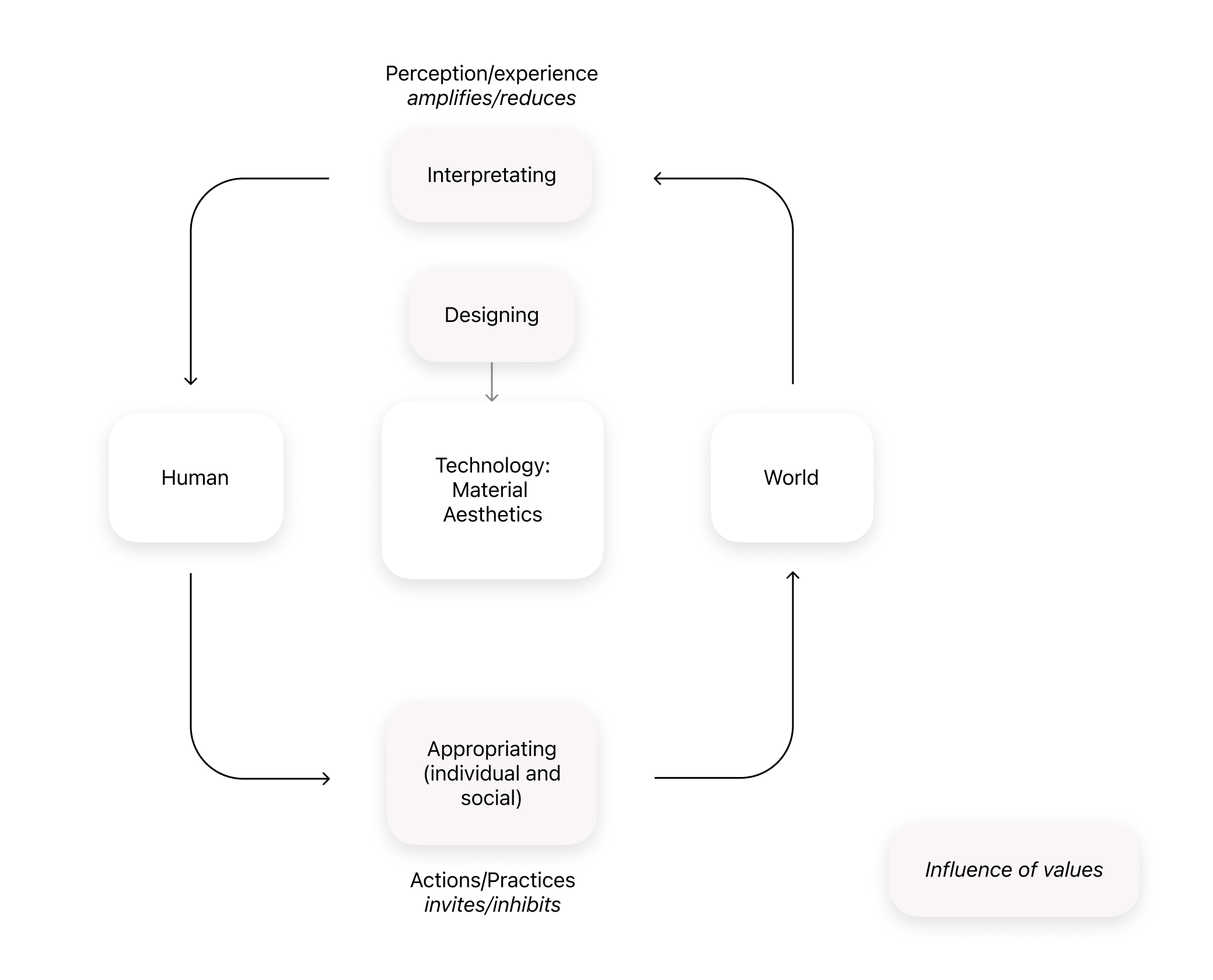Whitespace
RESEARCH THROUGH DESIGN – 2022
An explorative inquiry into and
download bachelor thesis ->
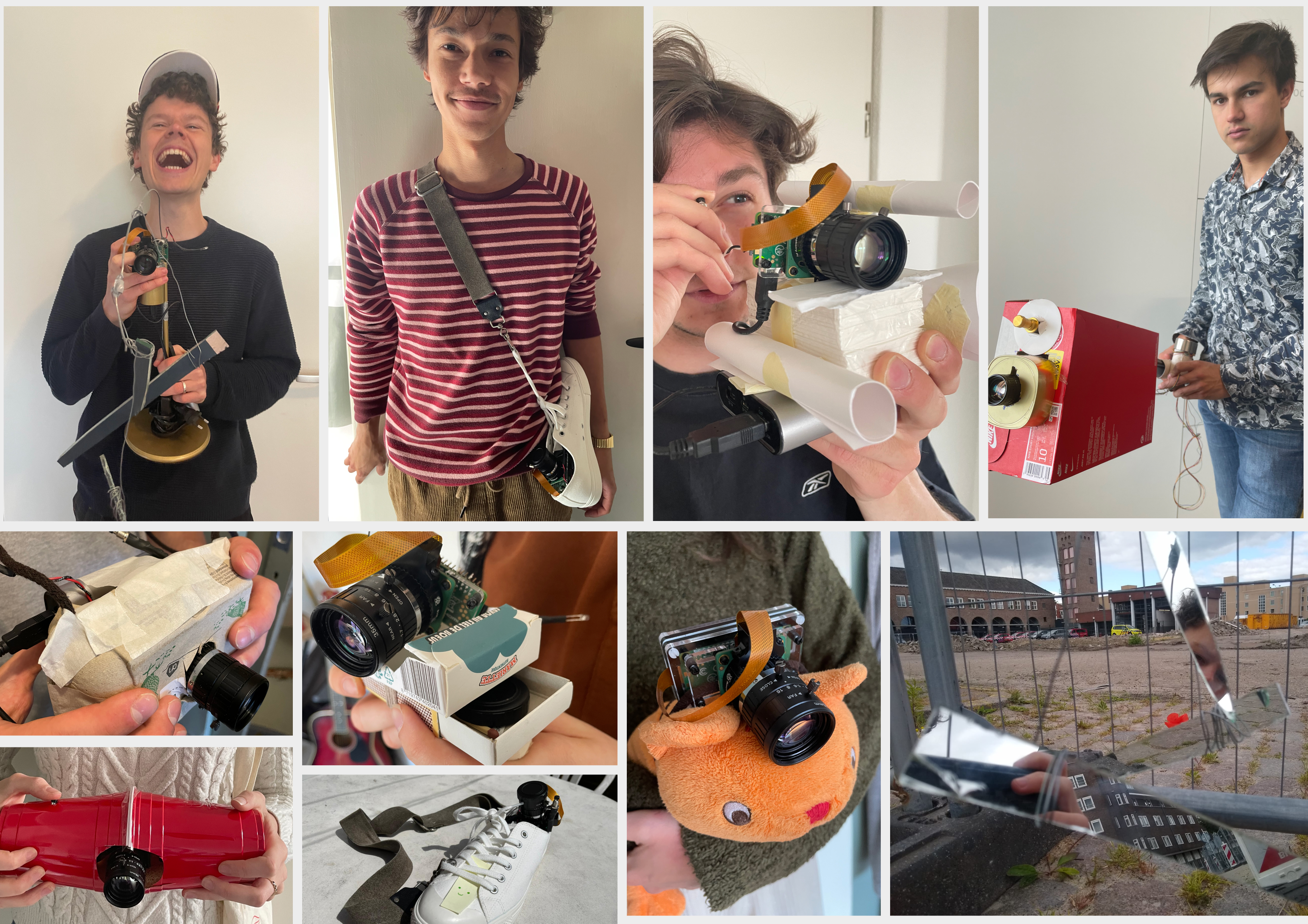
What would happen, were we to stand still for a minute and simply observe every day?
I believe in a societal transformation of rediscovering the quality of real experience. Where we understand that temporary stimuli bring temporary satisfaction, where we are conscious of our needs and desires, and choose the things we use accordingly, with care as a consequence.
Reality is always there. It’s only hidden in between the things, stimuli and thoughts.
The project focuses on technological mediation and took on a value-sensitive design approach
(Friedman, 1996) and uses a co-design methodology. Using the framework of Material Aesthetics by Pauline van
Dongen, the participants were interviewed to understand how their actions and perceptions were influenced by
their created mediator.
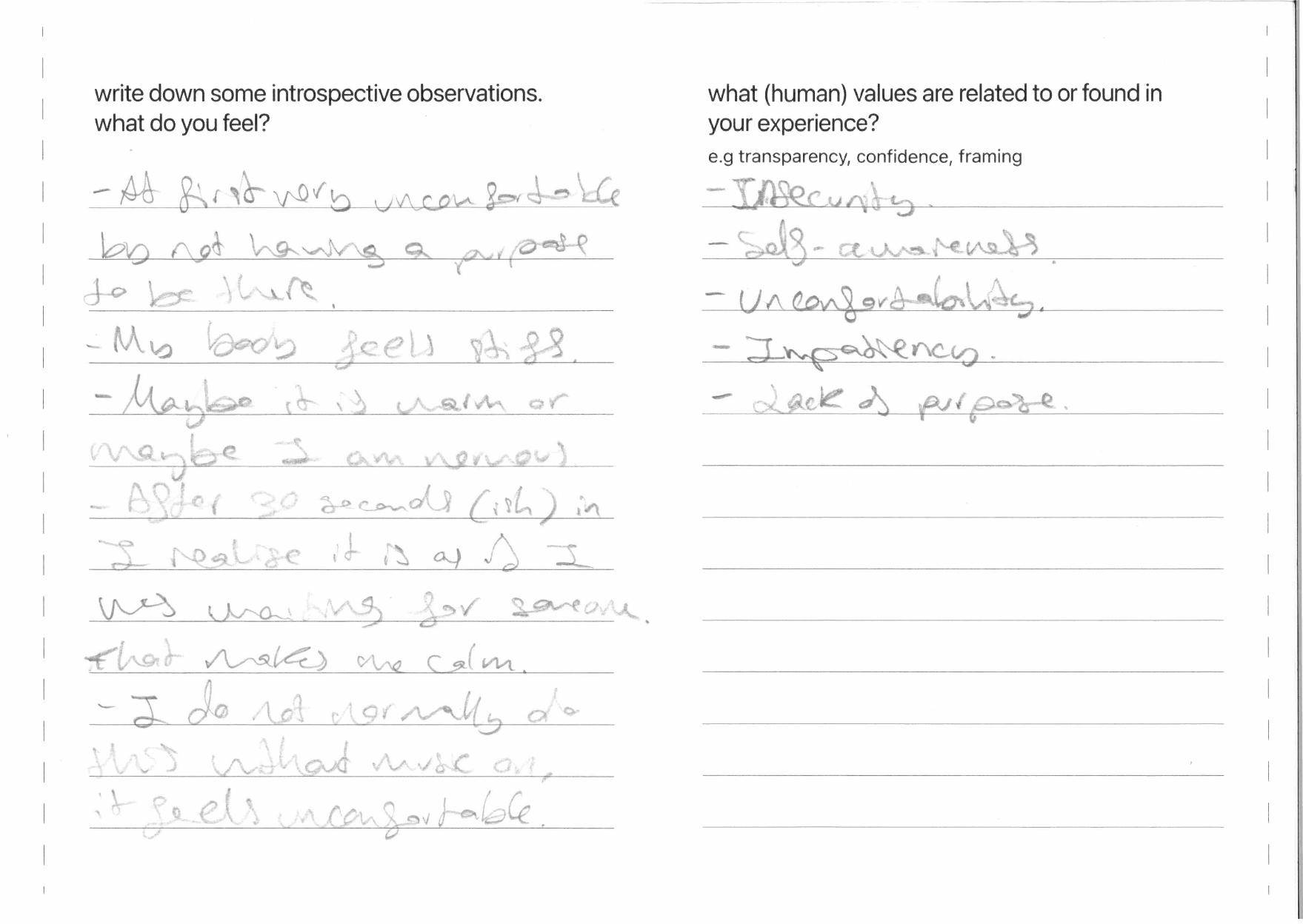
METHODOLOGY AND CONCLUSION
In two co-designs, participants were asked to observe their surroundings and write down their observations
and associated values which were mediated by technology. In the final session, they created their own
technological mediator, a camera based on provided electronics. The data from the provided booklet and an
interview afterwards were analyzed.
The camera module featured a shutter that would have to be held for 40 seconds, in which the camera would
take a random photo, forcing the user to consciously stand still. The participants would write down their
observations with a provided booklet and afterwards reflect on their observations. Using the framework of
Material Aesthetics by Pauline van Dongen, participants were interviewed to understand how their actions and
perceptions were influenced by their created mediator.
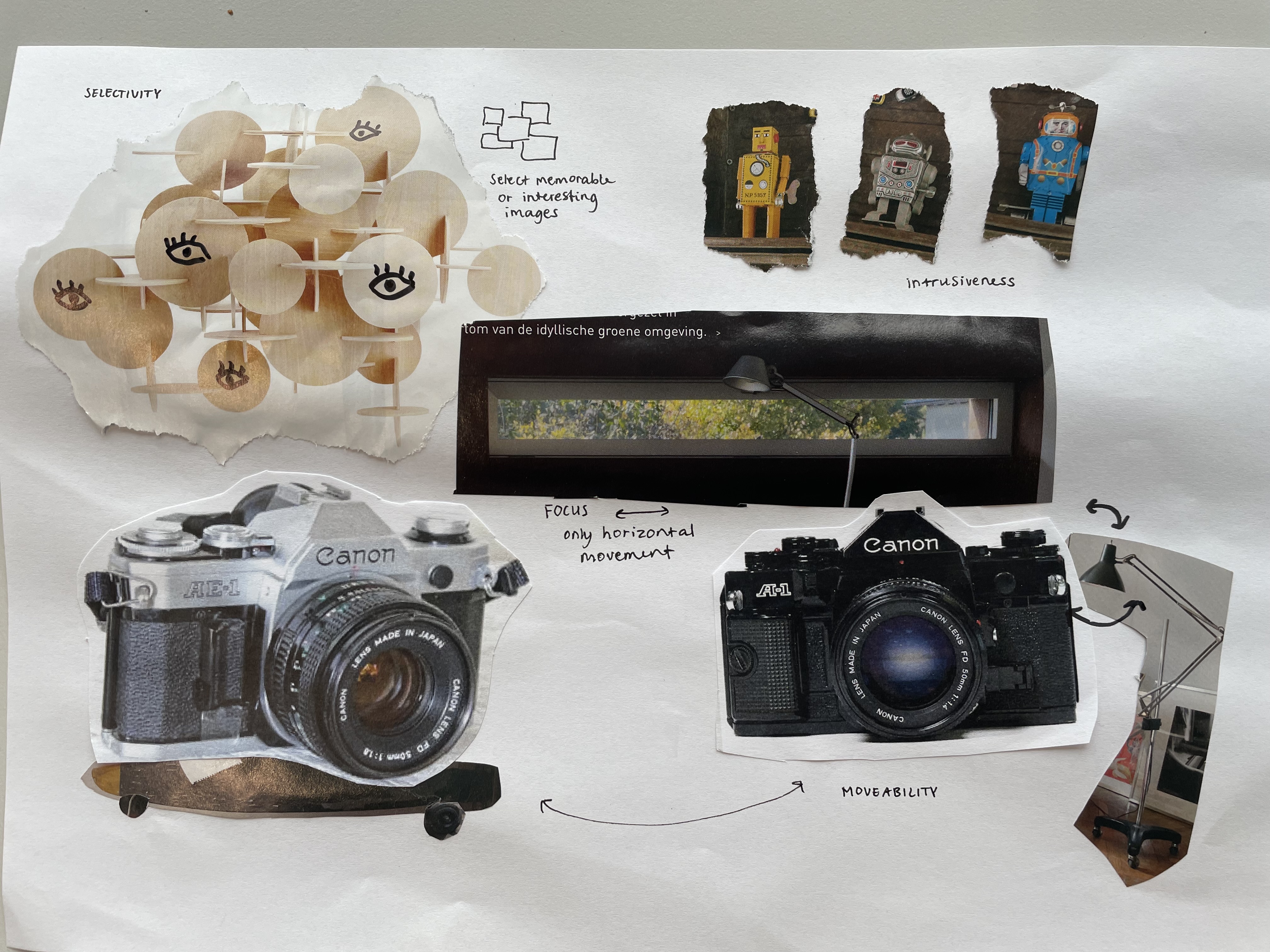

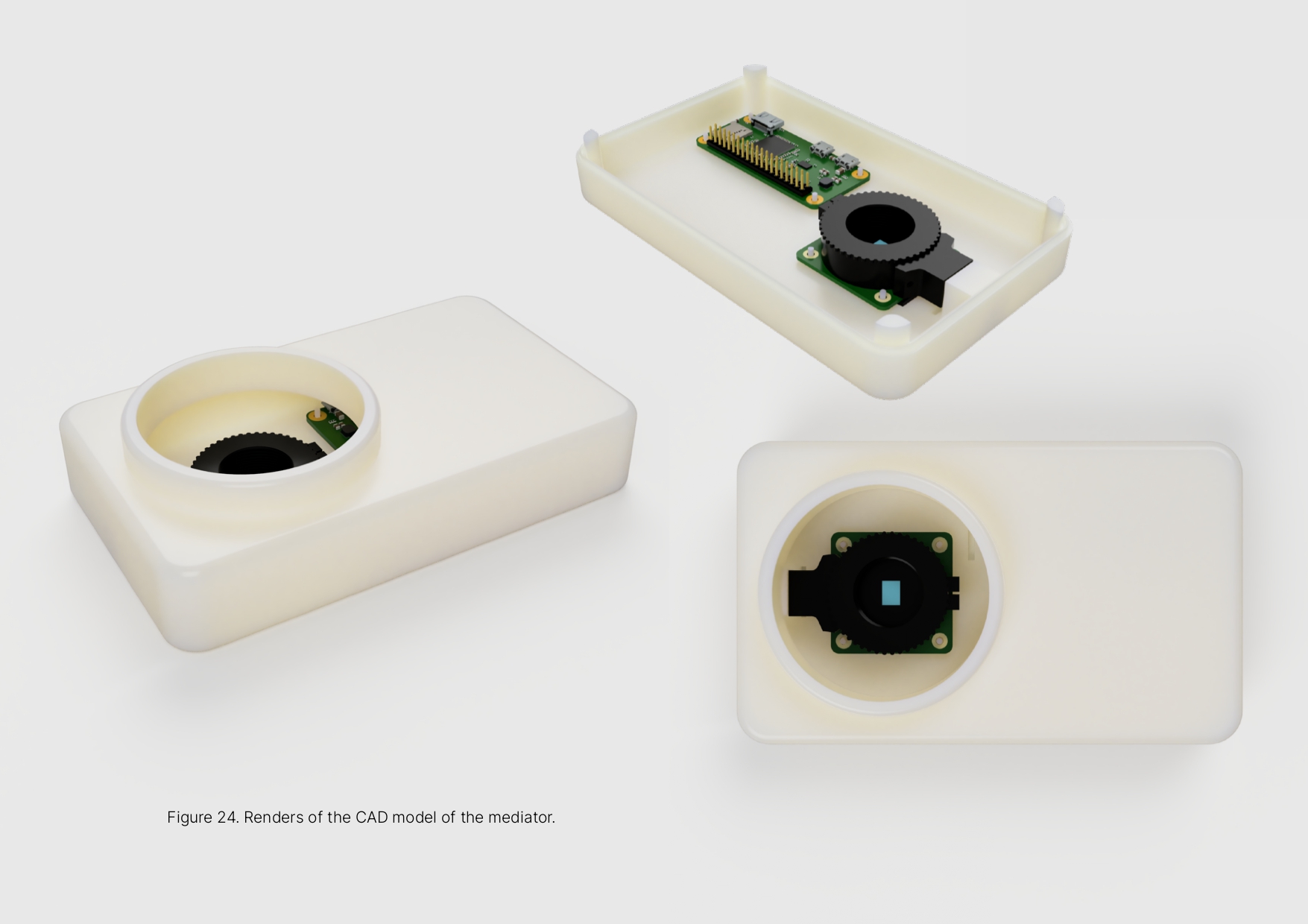
The conclusion of Whitespace is an explicit link between value-sensitive design and postphenomenology, having made the abstract theory tangible through making, incorporating human values from participants who appropriated their own technological mediator. Analyzing the generated design workbook consisting of descriptions of participants’ observations, experience, and insights, which are analyzed using the material aesthetics framework, the observation is made that values mediate our experience, the same way a technological mediator would do. The three points where values meet technological mediation are designing, appropriating and interpreting. This observation results in the expansion of the technological mediation framework by Verbeek (Hauser et al, 2018).
